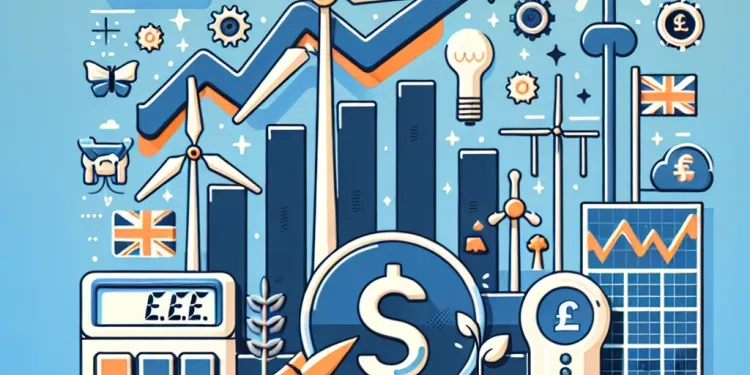
Find Help
More Items From Ergsy search
-

What factors influence changes to the energy price cap?
Relevance: 100%
-
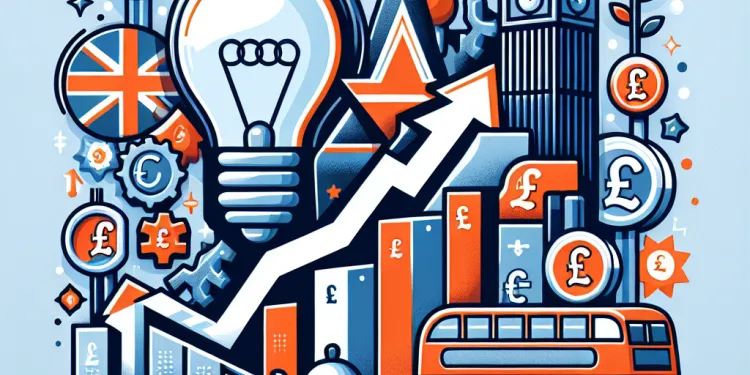
Is the energy price cap being reviewed due to market changes?
Relevance: 87%
-

What is the energy price cap?
Relevance: 86%
-

What is the Energy Price Cap in the UK?
Relevance: 86%
-
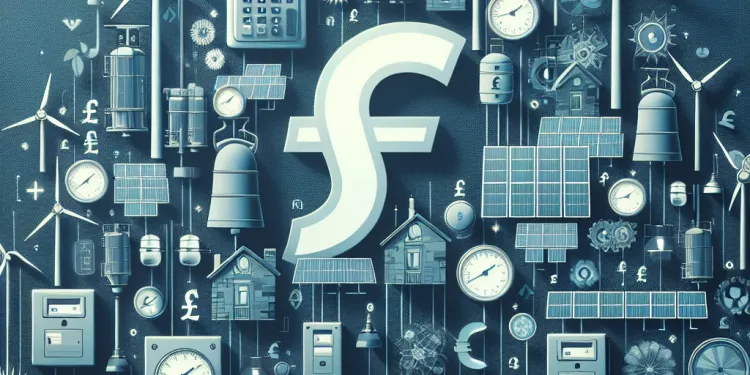
How is the energy price cap calculated?
Relevance: 83%
-

Is the energy price cap the same for everyone?
Relevance: 82%
-

Can the energy price cap go down as well as up?
Relevance: 81%
-
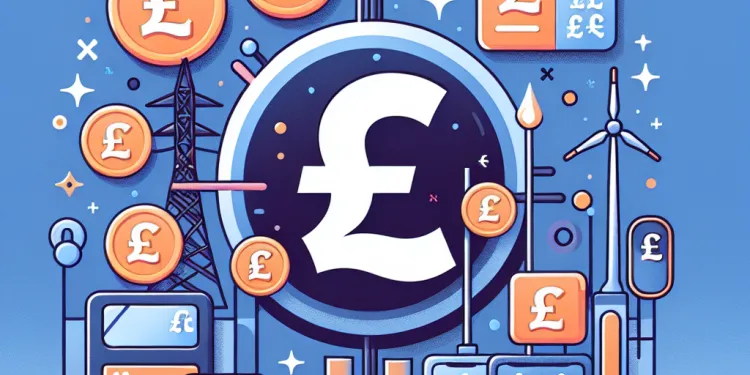
Why was the energy price cap introduced?
Relevance: 80%
-

When was the energy price cap introduced?
Relevance: 80%
-
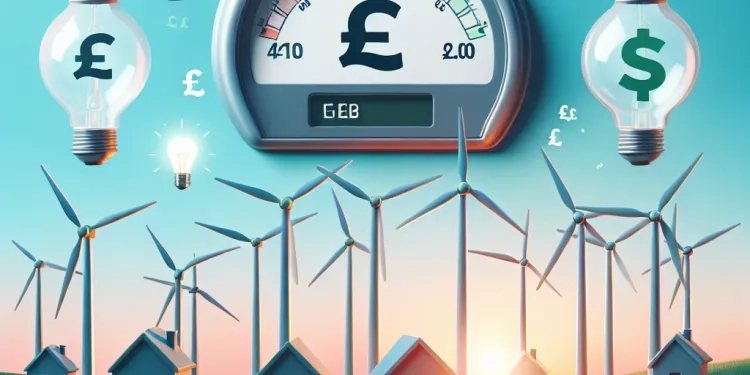
How often is the energy price cap reviewed?
Relevance: 79%
-

Does the energy price cap apply to all energy tariffs?
Relevance: 76%
-

Does the energy price cap apply to prepayment meters?
Relevance: 75%
-

How does the energy price cap affect my energy bills?
Relevance: 75%
-

How does the energy price cap affect green energy tariffs?
Relevance: 74%
-

Where can I find more information about the energy price cap?
Relevance: 74%
-
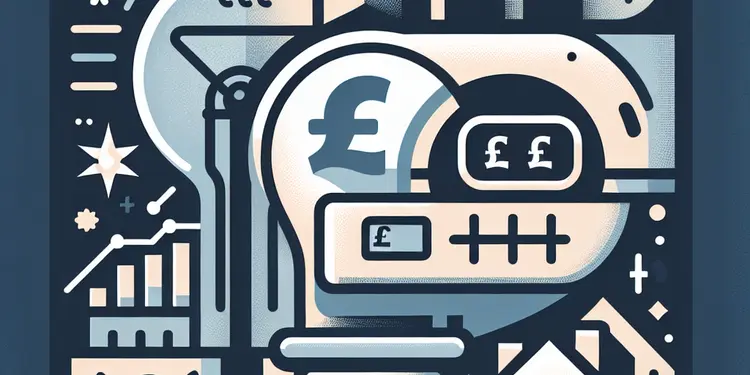
Are energy prices regulated in the UK?
Relevance: 72%
-

Can energy suppliers charge less than the price cap?
Relevance: 72%
-

Does the energy price cap guarantee my total bill?
Relevance: 72%
-
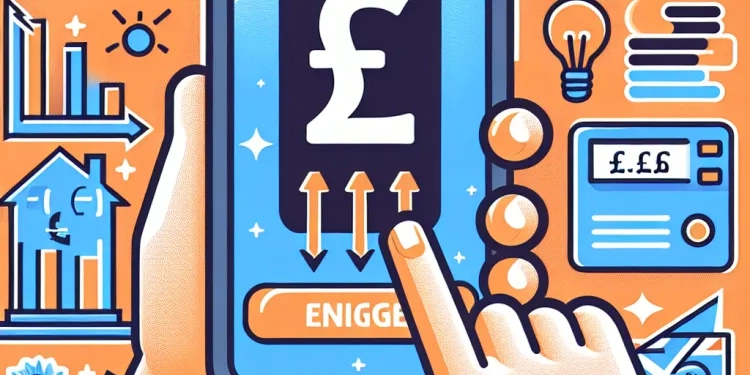
What happens if my energy supplier charges above the price cap?
Relevance: 71%
-
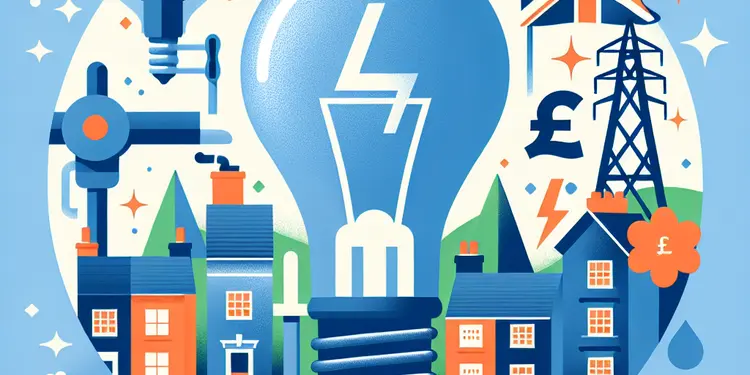
What factors influence the difference in electricity prices among UK energy companies?
Relevance: 63%
-

Who sets the energy price cap?
Relevance: 60%
-
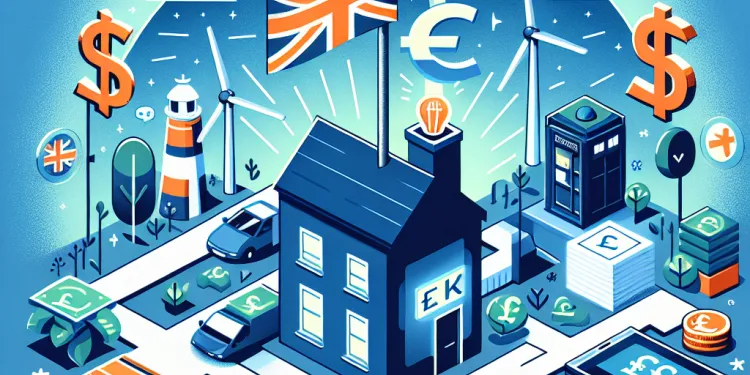
Can I still save money by switching suppliers if the price cap is in place?
Relevance: 58%
-
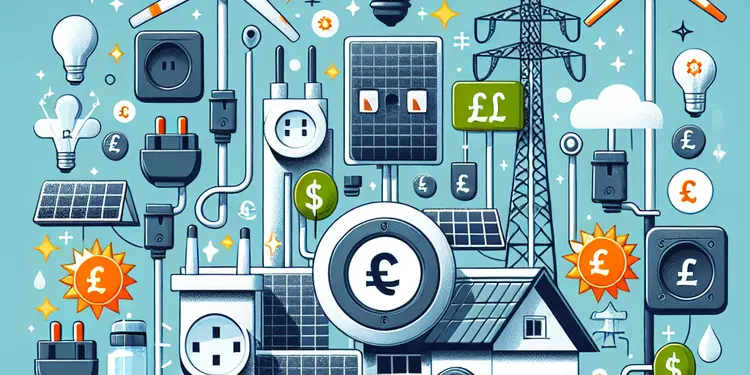
How often do energy companies review their electricity prices?
Relevance: 57%
-
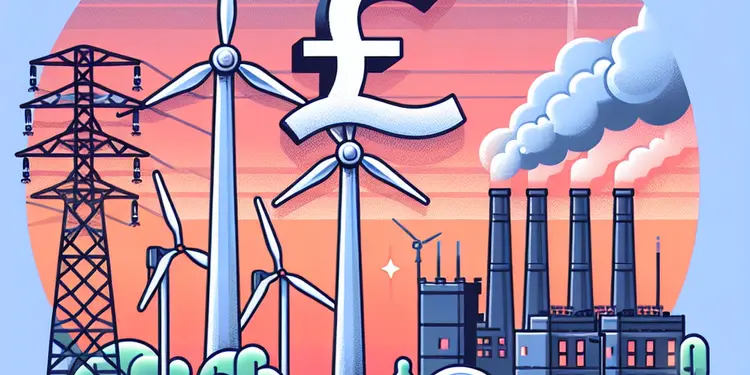
Do all UK energy companies cahrge the same for electricity
Relevance: 47%
-

Impact of Rising Energy Prices on Household Budgets
Relevance: 45%
-
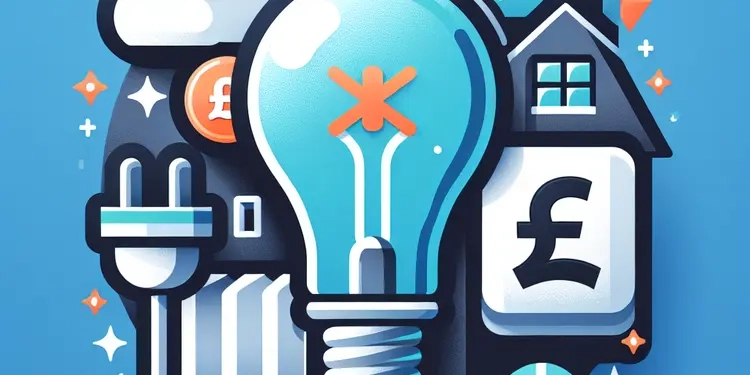
Do all UK energy companies charge the same for electricity?
Relevance: 44%
-
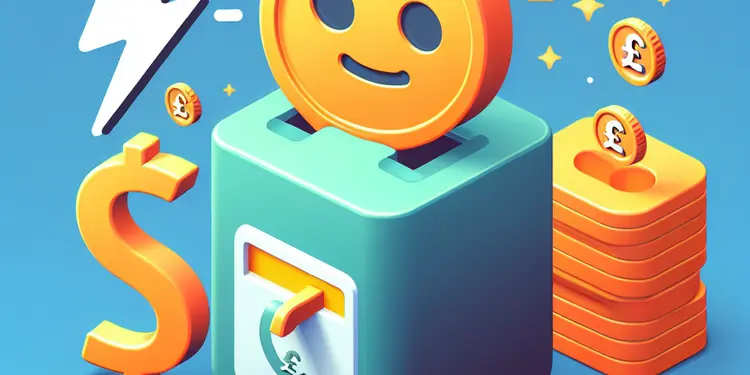
Do energy suppliers offer discounts on electricity prices?
Relevance: 44%
-

Energy Prices Set to Rise: How to Keep Your Bills Down
Relevance: 43%
-
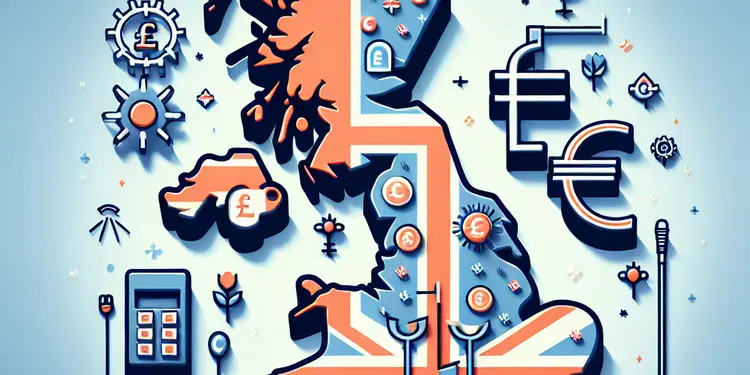
Can geographical location affect electricity prices in the UK?
Relevance: 40%
-
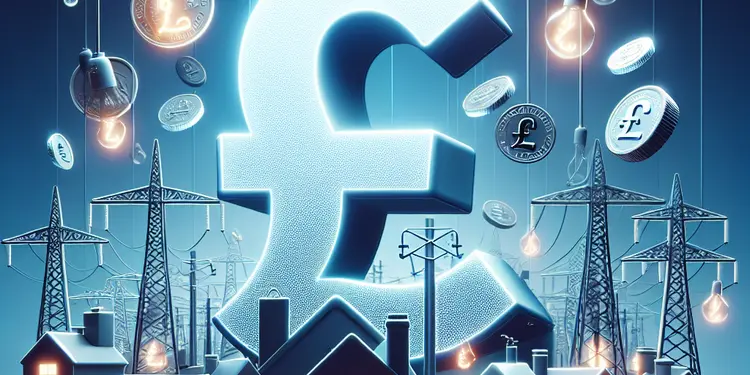
Why do energy companies charge different rates for their electricity?
Relevance: 37%
-
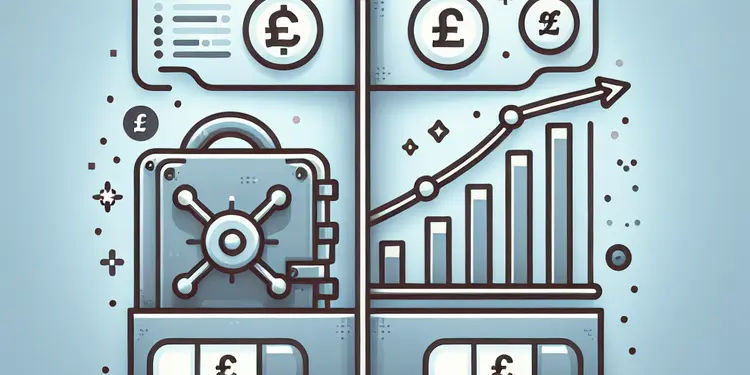
Can fixed-rate tariffs offer better price stability compared to variable tariffs?
Relevance: 36%
-

Impact of Rising Energy Costs on Family Budgets
Relevance: 36%
-
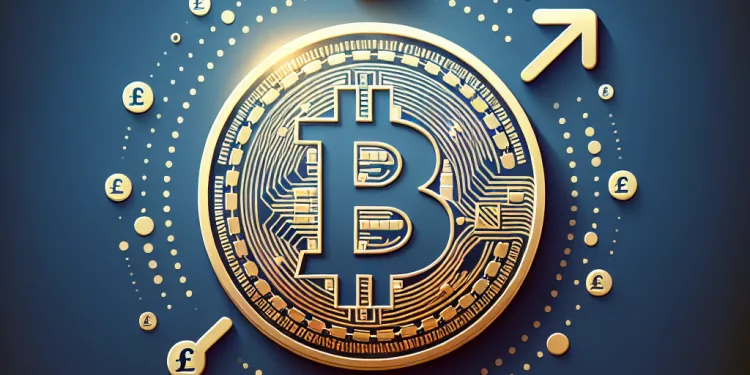
How is the price of Bitcoin determined?
Relevance: 36%
-
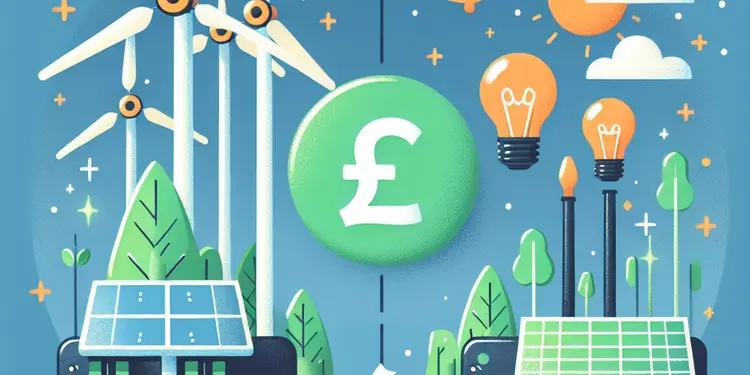
Are green energy tariffs more expensive than standard tariffs?
Relevance: 35%
-

UK Government Announces New Energy Bill Support Amid Rising Costs
Relevance: 35%
-

Is there a maximum price limit on electricity charges in the UK?
Relevance: 34%
-
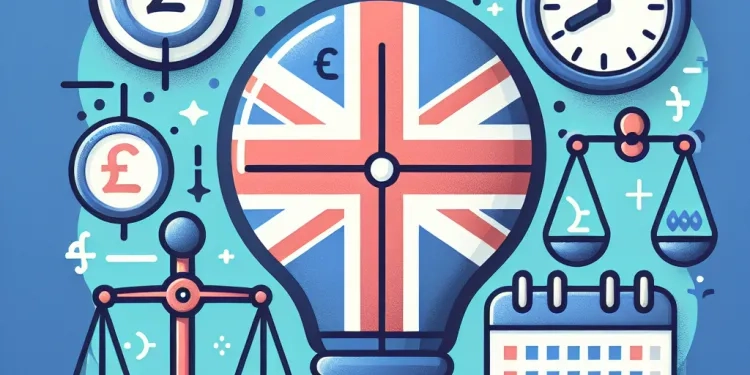
Can Ofgem or Octopus Energy change compensation rules in the future?
Relevance: 32%
-

Do electricity tariffs vary within the same energy company?
Relevance: 31%
-
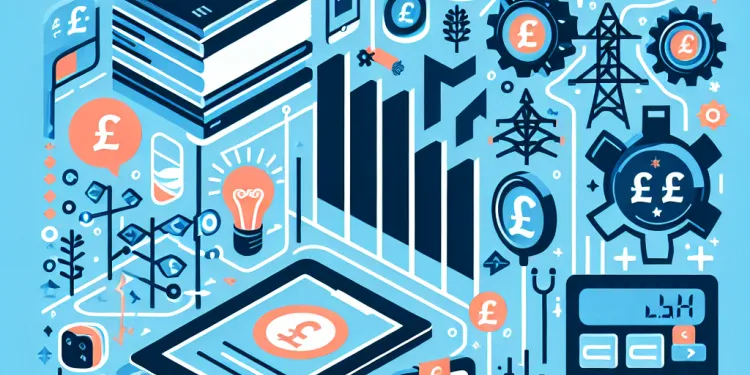
What should I do if my energy bill is unexpectedly high?
Relevance: 31%
-
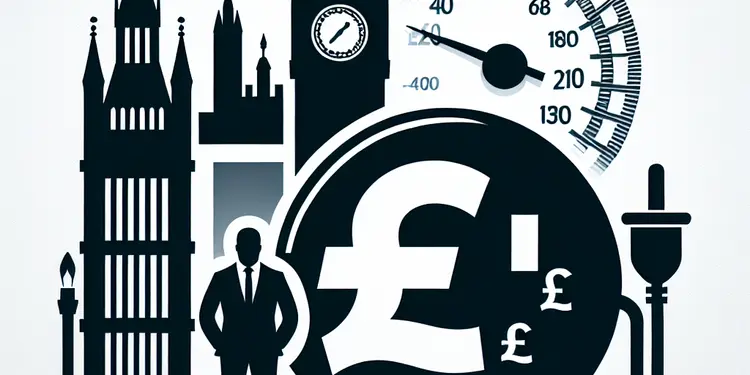
What is the energy price cap, and how does it affect electricity charges?
Relevance: 29%
Introduction to the Energy Price Cap
The energy price cap is a regulatory measure introduced by Ofgem, the UK’s energy regulator, to protect consumers from excessive charges on their gas and electricity bills. It sets a limit on the maximum amount energy suppliers can charge for each unit of energy used by consumers. However, this cap is not fixed and can change regularly, impacting what households pay for their energy.
Wholesale Energy Costs
One of the primary factors influencing changes to the energy price cap is the cost of wholesale energy. Electricity and gas prices can fluctuate due to supply and demand dynamics, geopolitical tensions, and natural disasters affecting production. When wholesale prices rise, the cap may be adjusted accordingly to allow energy suppliers to cover their increased costs, and vice versa.
Network Costs
Network costs refer to the expenses associated with maintaining and operating the energy grid, which includes electricity lines and gas pipes. These costs can change due to infrastructure development, maintenance needs, or enhancements required for more efficient delivery of energy to homes and businesses. As these costs are part of the energy price cap calculation, changes can influence its adjustment.
Policy Costs
The government imposes various energy policies aimed at promoting renewable energy sources, such as wind and solar power. These initiatives are funded by levies on energy bills. Changes in policy costs, due to new government schemes or amendments to existing ones, can lead to adjustments in the price cap to accommodate any additional costs passed onto consumers.
Supplier Operational Costs
Energy suppliers have their own operational costs including expenses related to customer services, billing systems, and infrastructure. Efficiency or inefficiency in their operations can impact these costs. If suppliers face increased operational expenses, this can indirectly affect the price cap as it may incorporate allowances for reasonable operational costs.
Market Competition
The level of competition within the energy market can indirectly influence the price cap. With more competition, there may be pressure on suppliers to maintain lower costs to retain or grow their customer base. However, if competition decreases or consolidation occurs, this might impact the cost structures and influence cap adjustments.
Inflation and Economic Factors
General economic conditions, including inflation rates, can affect the energy price cap. Inflation leads to higher costs for goods and services, including those used by energy companies in their operations. If inflation persists, price cap adjustments might be necessary to account for these broader economic pressures.
Conclusion
The energy price cap is affected by a range of factors that include wholesale energy costs, network costs, policy costs, supplier operational costs, market competition, and economic conditions. While its primary aim is to protect consumers, adjustments are essential to reflect changes in the energy market and broader economic context.
Introduction to the Energy Price Cap
The energy price cap helps make sure people do not pay too much for gas and electricity. It is put in place by Ofgem, a group in charge of energy in the UK. The cap tells energy companies the most they can charge for each unit of energy you use. This cap can change, which means your energy bills might go up or down.
Wholesale Energy Costs
The cost of energy can change a lot. This is because of things like how much energy people need, events around the world, and weather problems. If the cost to buy energy goes up, the price cap might also go up so companies can still cover costs.
Network Costs
Network costs are the money needed to keep the energy lines and gas pipes working. Sometimes we need to fix or build new things so energy gets to our homes and workplaces. If these costs change, the price cap might change too.
Policy Costs
The government wants to use cleaner energy like wind and solar power. To pay for this, some extra money is added to our energy bills. If the government changes these plans, the price cap might need to be adjusted too.
Supplier Operational Costs
Energy companies have their own costs, like helping customers and sending bills. If these costs go up, they might need to change what they charge. This can affect the price cap.
Market Competition
When there are lots of companies selling energy, they need to keep prices low to attract customers. But if there are fewer companies, prices might go up. This can change the price cap.
Inflation and Economic Factors
Prices for things in general can go up because of inflation. This makes everything more expensive, including the costs for energy companies. When this happens, the price cap might have to change too.
Conclusion
The energy price cap can change because of many things, like costs for energy, keeping the energy lines working, government energy plans, and more. The cap helps make sure people pay a fair price, but it can change when these costs change.
Frequently Asked Questions
What is the energy price cap?
The energy price cap is a government-imposed limit on the price that energy suppliers can charge consumers for a standard variable tariff, ensuring fairness and protecting consumers from excessive charges.
Who sets the energy price cap?
Ofgem, the UK energy regulator, is responsible for setting and enforcing the energy price cap.
How often is the energy price cap reviewed?
The energy price cap is typically reviewed twice a year, in April and October.
What factors influence the cost of wholesale energy?
The cost of wholesale energy is influenced by factors such as fuel availability, geopolitical events, transportation costs, and global demand and supply dynamics.
How do transmission and distribution costs affect the energy price cap?
Transmission and distribution costs cover the expense of delivering energy from generation sites to consumers, and changes in these costs can impact the price cap.
What role do government policies and regulations play in setting the energy price cap?
Government policies and regulations, such as environmental obligations and taxes, can influence costs that are factored into the energy price cap.
How does inflation affect the energy price cap?
Inflation can increase operational and administrative costs for energy suppliers, which may contribute to adjustments in the cap.
Why do operational costs of energy suppliers impact the energy price cap?
Operational costs include expenses related to meter readings, customer service, and maintaining infrastructure. Increases in these costs can lead to changes in the energy price cap.
How can currency fluctuations impact the energy price cap?
Currency fluctuations can affect the cost of importing energy and related goods, thus influencing the energy price cap.
What is the role of energy demand in determining the energy price cap?
Higher energy demand can lead to increased wholesale prices, influencing the energy price cap.
How do changes in renewable energy sources impact the energy price cap?
As renewable energy sources become more prevalent, their costs and the associated subsidies can affect the price cap.
What impact does market competition have on the energy price cap?
Increased competition can drive prices down, which might affect the calculations for the cap.
How do environmental regulations influence the energy price cap?
Environmental regulations may lead to additional costs for carbon emissions and compliance, impacting the price cap.
Can changes in technology influence the energy price cap?
Advancements in technology can lead to cost efficiencies and changes in the cap by affecting generation and operational costs.
How does the energy supply infrastructure affect the energy price cap?
Investments and maintenance in energy supply infrastructure can lead to adjustments in the price cap due to capital expenditure requirements.
Why do geopolitical tensions influence the energy price cap?
Geopolitical tensions can disrupt energy supply chains and lead to volatile wholesale prices, impacting the price cap.
What is the impact of international trade policies on the energy price cap?
Tariffs and trade barriers can increase the cost of energy imports, thus affecting the energy price cap.
How do subsidies for other energy sources impact the energy price cap?
Subsidies for alternative energy sources can shift demand and cost priorities, influencing the price cap.
Why might changes in government leadership or policies affect the energy price cap?
New leadership or policy shifts can introduce different regulatory and fiscal approaches, impacting the determinants of the price cap.
How do seasonal weather patterns influence the energy price cap?
Seasonal weather changes can affect energy demand and availability, thus influencing the energy price cap.
What is the energy price cap?
The energy price cap is a limit on how much you pay for gas and electricity. It helps keep your bills from getting too high.
If you need help, you can ask someone you trust to explain it. You can also use pictures or videos to learn more.
The energy price cap is a rule made by the government. It stops energy companies from charging too much money for their standard service. This rule helps make sure prices are fair and stops people from paying too much.
Who decides the limit on energy prices?
Ofgem is the company that looks after energy in the UK. They help keep the cost of energy fair.
How often does the energy price cap change?
The energy price cap is checked twice a year. This happens in April and October.
What makes wholesale energy cost more or less?
The price of energy that big companies buy changes for different reasons. This can be because:
- How easy it is to get fuel.
- Things happening between countries, like arguments.
- The cost to move energy from place to place.
- How much energy people around the world want to buy and how much is available.
To understand more, you can use simple charts or videos that explain how these things work. Asking someone to help explain can also be useful.
How do moving and sharing electricity costs change the highest energy price?
The cost to move electricity and share it with people can change how much energy costs. This is called the "energy price cap." It is the most money you have to pay for your energy.
Here are some ways you can understand this better:
- Ask for help: Talk to a friend or family member if you don't understand.
- Use helpful tools: Look at pictures or videos about how electricity gets to your house.
- Break it down: Look at each part of your energy bill and ask what it means.
Remember, it's okay to ask questions if things are confusing!
Transmission and distribution costs are what it costs to send energy to your home from where it is made. If these costs change, it can change how much we pay for energy.
How do government rules affect energy prices?
Governments make rules to help control the price of energy. These rules can help keep energy prices fair.
Governments decide on rules that say how much energy companies can charge. This is called a "price cap."
Price caps stop energy prices from getting too high. This helps people pay their energy bills.
Tools like picture cards or videos can help explain this more. Ask someone if you need help understanding.
Government rules and laws, like caring for the environment and paying taxes, can change how much energy costs. These rules help decide the highest price for energy.
What happens to the energy price cap when prices go up?
When prices go up, it can cost more money for energy companies to run their business. This can change how much they charge people for energy.
Why do the running costs of energy companies affect the maximum energy price?
Energy companies have costs to run their business. These are called "running costs." When these costs go up, the price you pay for energy can also go up.
The price cap is the highest price energy companies can charge for their energy. If running costs go up, the price cap might go up too. This means your energy bill could be higher.
If you want to learn more, you can use simple language websites or talk to someone who knows a lot about energy bills. They can help you understand better.
Operational costs are the money spent on things like checking meters, helping customers, and keeping equipment working. If these costs go up, it can make energy prices go up too.
How do changes in money value affect energy prices?
When money values go up and down, it can change how much it costs to bring energy and goods from other countries. This can change the prices people pay for energy.
How does using energy affect the energy price limit?
When we use a lot of energy, it can make prices go up. When we use less, prices can go down.
The energy price limit is like a maximum cost for gas and electricity. It helps us by stopping prices from being too high.
To understand better, you can:
- Ask someone to explain it with pictures.
- Watch videos about energy and prices.
When people use more energy, it can make energy more expensive for everyone. This can change how much energy companies are allowed to charge.
How do changes in green energy affect the energy price limit?
Green energy comes from the sun, wind, and water. It helps us make electricity.
Sometimes, green energy can change how much we pay for electricity.
If we use more green energy, it can make electricity cheaper for everyone.
There is a limit on how much electricity companies can charge us. This is called an "energy price limit."
When green energy gets cheaper to make, the energy price limit can also get lower.
To help understand, you can use drawings or pictures to show how green energy works.
Talking with a friend or adult can also help explain this.
More and more people are using renewable energy, like wind and solar power. This can change how much it costs to have electricity, because it can be cheaper or need help from the government. This can also change the highest price you have to pay for electricity.
How does competition affect the energy price limit?
The energy price limit is how much people pay for energy. Competition means there are many companies selling energy. When companies compete, they try to offer better prices and services.
This can change how much the energy price limit is. Here are some ways competition can change the energy price limit:
- Lower Prices: If more companies offer energy, they may lower prices to attract customers. This can make the energy price limit go down.
- Better Services: Companies might try to offer better services to win over customers. This can also affect prices.
- Price Stability: If there is healthy competition, prices might change less quickly, which can make it easier for people to plan their budgets.
To understand this topic better, you can:
- Watch simple videos about energy prices.
- Use picture charts to see how prices change.
- Talk with someone who can explain it in easy words.
When there are more businesses trying to sell the same thing, they might lower their prices. This can change how we figure out the highest price something can be sold for.
How do rules about the environment change the energy price limit?
Environmental rules are like instructions to keep nature clean and safe. These rules can affect how much money we pay for energy like gas and electricity. When companies follow these rules, sometimes it costs them more, and they might need to charge us more too. This can change the energy price limit, which is the highest price allowed for energy.
Here are some tips to help understand this topic:
- Ask someone to explain the 'energy price limit' to you.
- Look at pictures or videos about how rules for the environment work.
- Use simple words to talk about energy and money, like 'cost' and 'rules'.
Rules to protect the environment can make it more expensive to use things that release carbon. This can make prices go up.
Can new technology change energy prices?
New technology can help save money. It can make things cheaper to make and run.
How does the energy supply system change the top energy price?
The system that gives us energy can change the highest price we pay for it. When it costs more to get energy to us, the price can go up. When it costs less, the price can go down.
Tools to help understand:
- Pictures: Look at pictures or diagrams of how energy gets to homes.
- Videos: Watch videos that explain energy prices and supply.
- Simple Charts: Use easy charts to see how prices change.
- Ask Questions: Talk to a teacher or friend who can help explain more.
Spending money to build and fix energy systems can change the top price of energy. This is because we need money for these projects.
How do world events change energy prices?
When countries argue or fight, it can stop how energy moves from one place to another. This can make energy prices go up and down a lot. It can also change the price limits for how much people have to pay for energy.
How do trade rules between countries change energy costs?
Taxes and rules about buying and selling can make energy from other countries cost more. This can change how much we pay for energy.
How do money help for other energy change energy price limits?
Sometimes, the government gives money to help with energy, like gas or solar power. This is called a "subsidy".
These subsidies can change energy prices. They might make energy cheaper or keep costs from going up too much. This is called a "price cap".
Here’s how it works: If the government helps with more money, price caps can help keep energy prices low for everyone.
If you want more information, you can ask someone to explain or use tools like text readers.
Governments can give money to help pay for new energy like wind and solar. This can change how people use energy and how much it costs. It can also affect the highest price for energy.
Why do changes in government leaders or rules change the energy price cap?
When new leaders come into the government, they might change the rules. These rules can affect how much we pay for energy.
If the rules change, the price cap for energy might change too. The price cap is the most money companies can charge for energy.
Sometimes, new leaders want to make things cheaper. Other times, they might have different ideas.
If you want to know more, you can:
- Ask someone you trust to explain this to you.
- Find simple videos online about energy and prices.
New leaders or changes in rules can bring new ways of controlling money and regulations. This can change the things that decide how high or low the price limit can be.
How does the weather affect energy costs?
Changes in the weather during different seasons can affect how much energy people use. It can also change how much energy there is to use. This can make energy prices go up or down.
Useful Links
- Ergsy carfully checks the information in the videos we provide here.
- Videos shown by Youtube after a video has completed, have NOT been reviewed by ERGSY.
- To view, click the arrow in centre of video.
- Most of the videos you find here will have subtitles and/or closed captions available.
- You may need to turn these on, and choose your preferred language.
- Go to the video you'd like to watch.
- If closed captions (CC) are available, settings will be visible on the bottom right of the video player.
- To turn on Captions, click settings .
- To turn off Captions, click settings again.
More Items From Ergsy search
-

What factors influence changes to the energy price cap?
Relevance: 100%
-

Is the energy price cap being reviewed due to market changes?
Relevance: 87%
-

What is the energy price cap?
Relevance: 86%
-

What is the Energy Price Cap in the UK?
Relevance: 86%
-

How is the energy price cap calculated?
Relevance: 83%
-

Is the energy price cap the same for everyone?
Relevance: 82%
-

Can the energy price cap go down as well as up?
Relevance: 81%
-

Why was the energy price cap introduced?
Relevance: 80%
-

When was the energy price cap introduced?
Relevance: 80%
-

How often is the energy price cap reviewed?
Relevance: 79%
-

Does the energy price cap apply to all energy tariffs?
Relevance: 76%
-

Does the energy price cap apply to prepayment meters?
Relevance: 75%
-

How does the energy price cap affect my energy bills?
Relevance: 75%
-

How does the energy price cap affect green energy tariffs?
Relevance: 74%
-

Where can I find more information about the energy price cap?
Relevance: 74%
-

Are energy prices regulated in the UK?
Relevance: 72%
-

Can energy suppliers charge less than the price cap?
Relevance: 72%
-

Does the energy price cap guarantee my total bill?
Relevance: 72%
-

What happens if my energy supplier charges above the price cap?
Relevance: 71%
-

What factors influence the difference in electricity prices among UK energy companies?
Relevance: 63%
-

Who sets the energy price cap?
Relevance: 60%
-

Can I still save money by switching suppliers if the price cap is in place?
Relevance: 58%
-

How often do energy companies review their electricity prices?
Relevance: 57%
-

Do all UK energy companies cahrge the same for electricity
Relevance: 47%
-

Impact of Rising Energy Prices on Household Budgets
Relevance: 45%
-

Do all UK energy companies charge the same for electricity?
Relevance: 44%
-

Do energy suppliers offer discounts on electricity prices?
Relevance: 44%
-

Energy Prices Set to Rise: How to Keep Your Bills Down
Relevance: 43%
-

Can geographical location affect electricity prices in the UK?
Relevance: 40%
-

Why do energy companies charge different rates for their electricity?
Relevance: 37%
-

Can fixed-rate tariffs offer better price stability compared to variable tariffs?
Relevance: 36%
-

Impact of Rising Energy Costs on Family Budgets
Relevance: 36%
-

How is the price of Bitcoin determined?
Relevance: 36%
-

Are green energy tariffs more expensive than standard tariffs?
Relevance: 35%
-

UK Government Announces New Energy Bill Support Amid Rising Costs
Relevance: 35%
-

Is there a maximum price limit on electricity charges in the UK?
Relevance: 34%
-

Can Ofgem or Octopus Energy change compensation rules in the future?
Relevance: 32%
-

Do electricity tariffs vary within the same energy company?
Relevance: 31%
-

What should I do if my energy bill is unexpectedly high?
Relevance: 31%
-

What is the energy price cap, and how does it affect electricity charges?
Relevance: 29%


